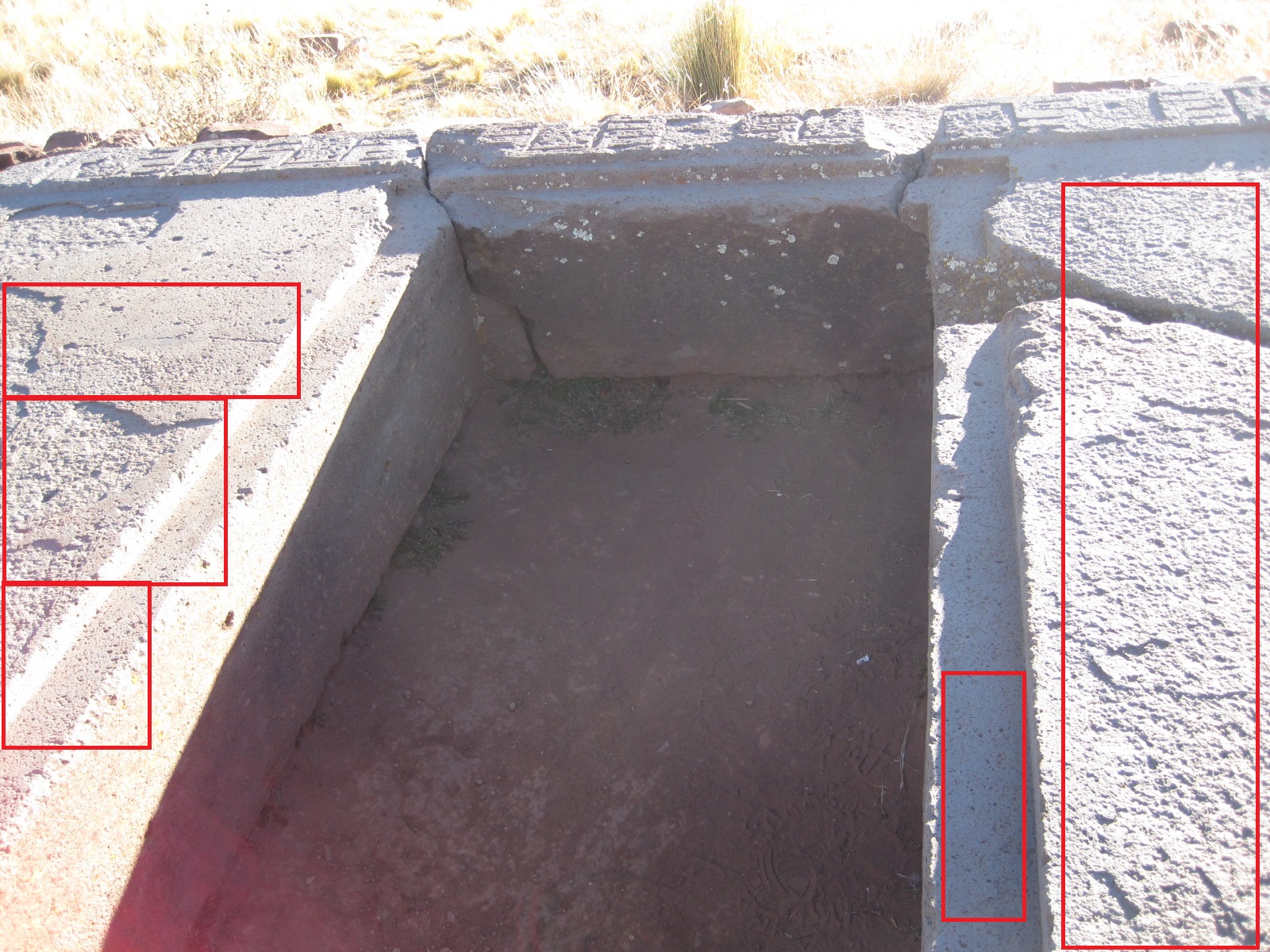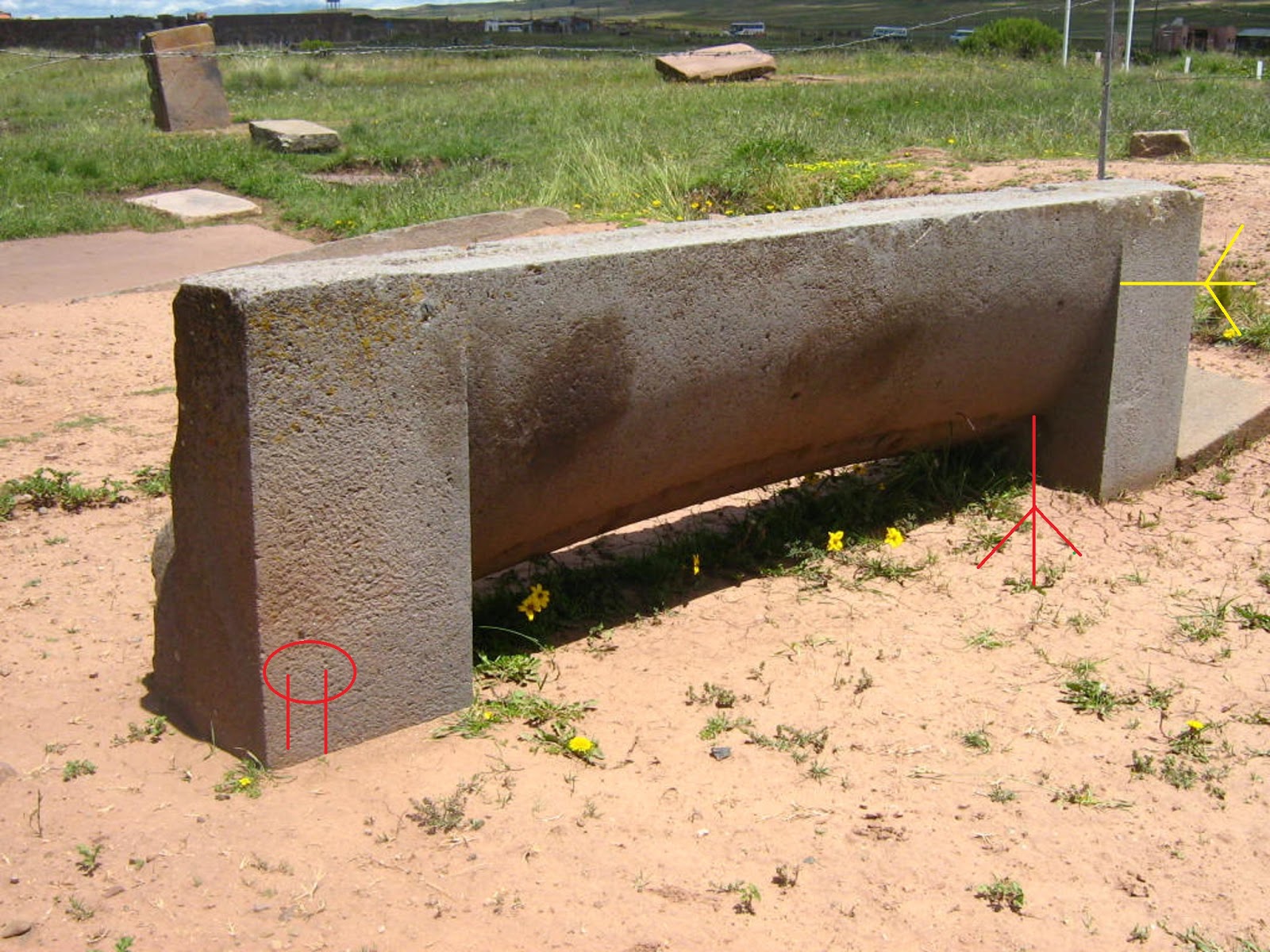| Online: | |
| Visits: | |
| Stories: |

| Story Views | |
| Now: | |
| Last Hour: | |
| Last 24 Hours: | |
| Total: | |
Concrete Blocks Mistaken for Rocks in Bolivia
Wednesday, November 25, 2015 8:06
% of readers think this story is Fact. Add your two cents.
Last edited on Nov. 30, 2015
Five red boxes seem to contain plaster. On the left hand side are flat and smooth surfaces meeting in 90 degrees. Hand tools (without an engine) cannot produce such surfaces. The right-angled objects are concrete blocks molded by ancient people. The object is found in Puma Punku, Bolivia. Most of the objects in Puma Punku are concrete blocks mistaken for sandstone. Image source: https://www.pinterest.com/pin/414331234445874843/
Ancient molded artificial stone found in Puma Punku, Bolivia. On the right hand side is a red arrow pointing to smooth curving surface. Yellow arrow points to a perfect right angle. Two red lines go to tiny holes produced by air bubbles when the ancient people manufactured the concrete. Image source: www.panoramio.com/photo/18910023
Many archaeologists have mistaken concrete material for natural rocks, as evidenced in http://wretchfossil.blogspot.tw/2014/08/archaeologists-mistook-numerous.html .
Many archaeologists have mistaken concrete material for natural rocks, as evidenced in http://wretchfossil.blogspot.tw/2014/08/archaeologists-mistook-numerous.html .
Added on Nov. 29, 2015: Wikipedia claims the objects are rocks.
Wikipedia article claims the objects are sandstone cut and transported by ancient people:en.wikipedia.org/wiki/Pumapunku#Engineering
Quote from the above link: “Archaeologists argue that the transport of these stones was accomplished…”
Quote from the above link: “The blocks were so precisely cut as to suggest the possibility of prefabrication and mass production, technologies far in advance of the Tiwanaku’s Inca successors hundreds of years later.[9] ”
Quote from the above link: “The blocks were so precisely cut as to suggest the possibility of prefabrication and mass production, technologies far in advance of the Tiwanaku’s Inca successors hundreds of years later.[9] ”
Added on Nov. 30, 2015: No Sedimentary Layers, No Sandstone
Wikipedia article claims those objects are sandstone. Sandstone is a kind of sedimentary rock characterized by layers such as these: https://en.wikipedia.org/wiki/Sandstone. However, no layers are found in the objects at Puma Punku. Concrete blocks have no layers.





